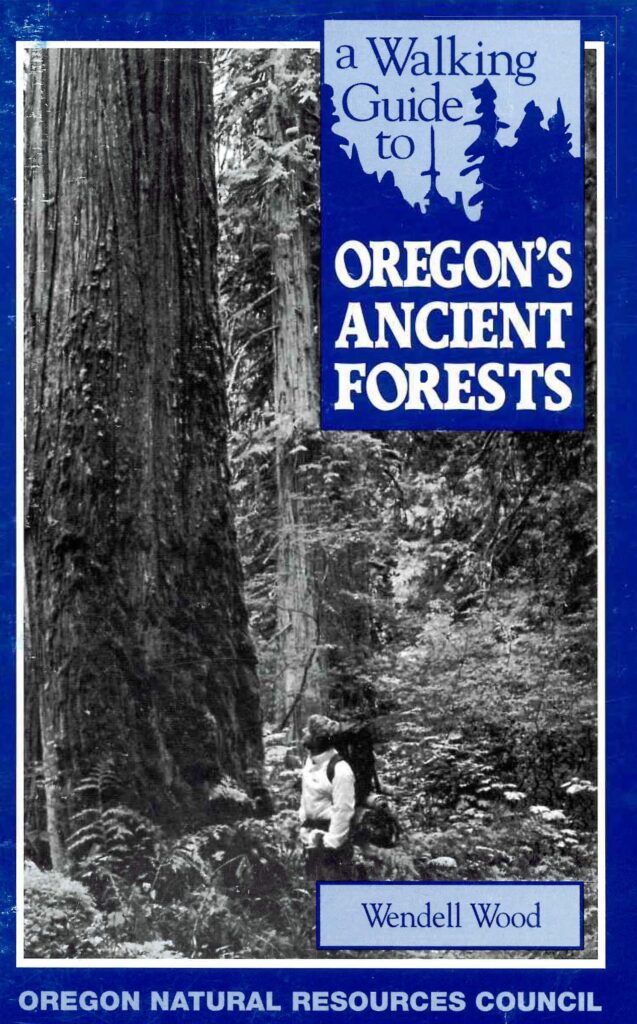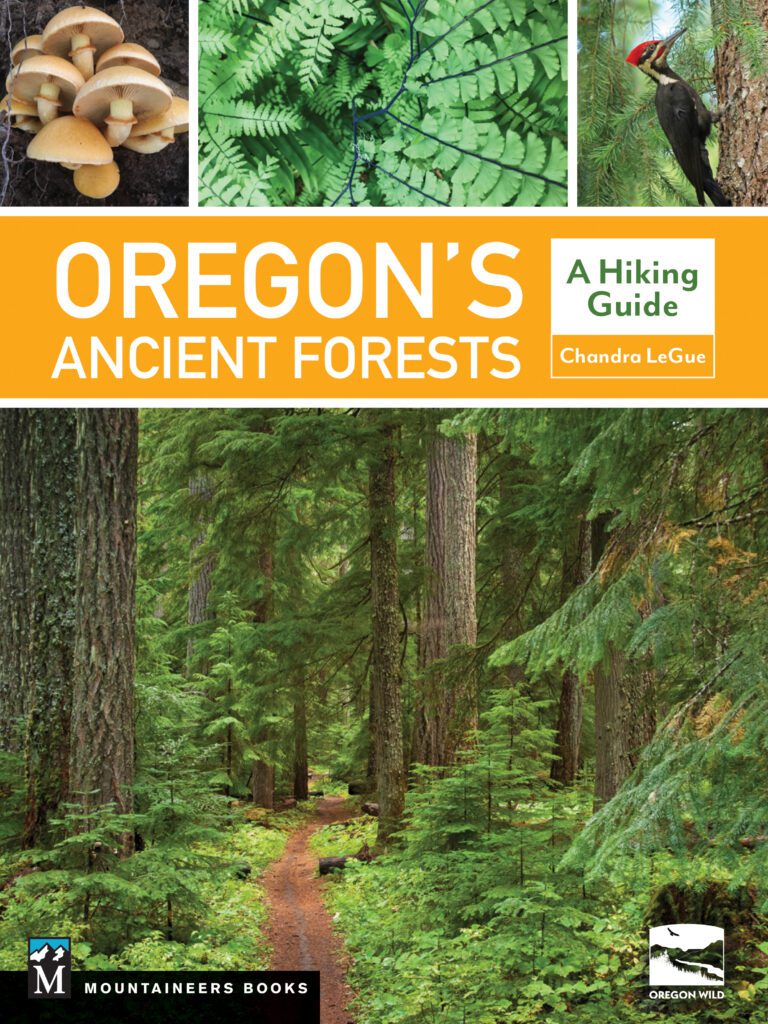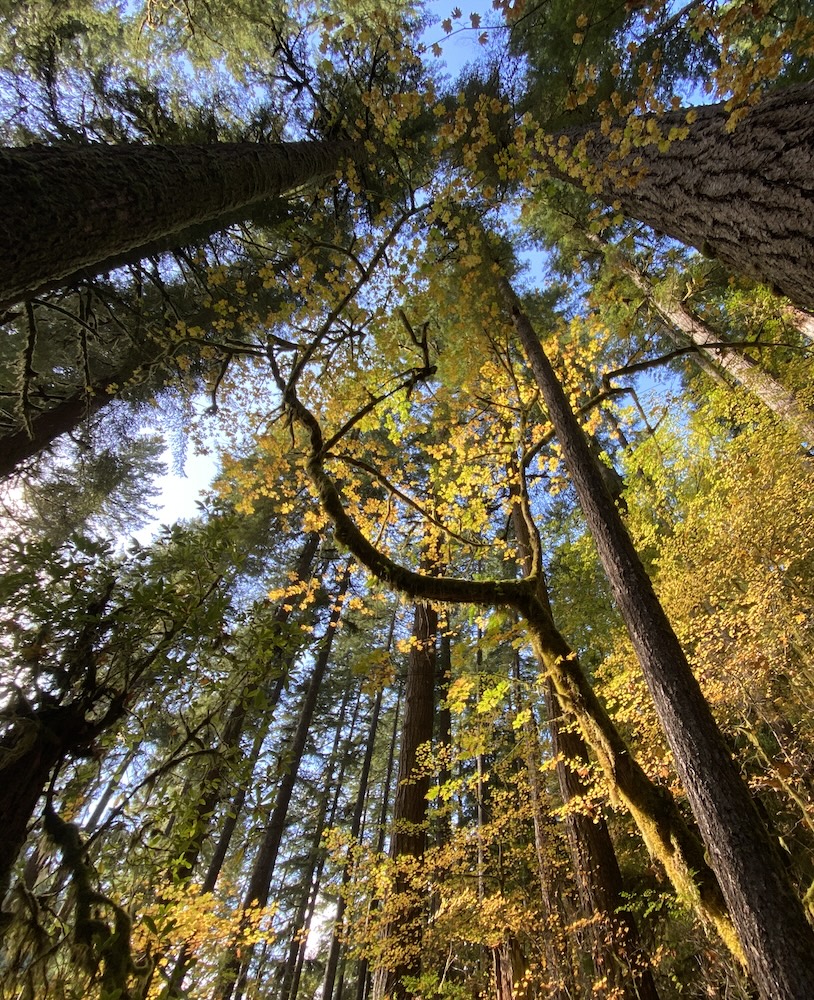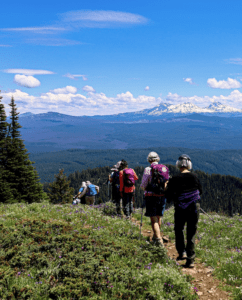What’s not to love about Oregon’s ancient forests? Whether you like hiking beneath towering canopies, looking for signs of wildlife, foraging for mushrooms or berries, or just drinking clean water, these forests help sustain both human and ecological communities.
Unfortunately, after a century of aggressive logging, road building, and fire suppression few of the ecologically-connected, biodiversity-rich forests that spread across our state before colonization remain. Most are found on what are now federal public lands and in areas that Oregon Wild and others worked hard to gain protections for, whether through legislation like the Wilderness Act or policies like the Roadless Area Conservation Rule.
Today, we know even more about how important these forests are for our climate, water, wildlife, communities, and economy. But they are still under threat.
Background and history
In 1991, Oregon Wild (then Oregon Natural Resources Council or ONRC) published a book by one of its longest-serving staff members, Wendell Wood: “A Walking Guide to Oregon’s Ancient Forests.” At the time, a lot was at stake. This was during the height of the “timber wars” when advocates like Wendell and organizations like Oregon Wild were using all the tools they had to fend off the rampant clear-cutting of our remaining ancient forests. The political push and pull was alternately proposing to save the ancient forests and threatening to log more of them.


While much has changed since this initial guide to at-risk ancient forests, including the implementation of the Northwest Forest Plan and restrictions on logging large trees in eastern Oregon, there remain ongoing threats to the last remaining mature, old-growth, and naturally-recovering burned forests we depend on for so much. So in 2019, three years after Wendell’s untimely death, Oregon Wild staffer Chandra LeGue updated and republished this “hiking guide that gives a damn.”
Unfortunately, a surprising amount has not changed about the threats to these forests. Federal administrations more concerned with the interests of Big Timber than those of endangered species, clean water, and climate change still seek ways to erode forest protections. Powerful interests continue to spread false information about “sustainable” forestry, the causes of wildfire, and the “need” to log our public lands. Forest advocates cannot rest on the work that has been done to protect our ancient forests. With so few of them left, every acre we protect – and the vast amounts that need to be restored – is vital for wildlife, clean and plentiful water, the climate, and Oregon’s future economy. And to become effective advocates for these ancient forests, people need to experience them directly. That is where this book comes in. (From the 2019 book’s introduction)
“Oregon’s Ancient Forests: A Hiking Guide” includes more than 90 hike descriptions to help forest lovers explore some of Oregon’s last remaining ancient forests, while giving readers the ecological context and appreciation they need to be advocates for our forest ecosystems in a political climate that often puts industry profits ahead of public values. There are hikes in every region of the state, covering the diversity of our forests and offering opportunities ranging from easy strolls to longer adventures.
Buy the book!
Oregon’s Ancient Forests: A hiking guide can be purchased from Oregon Wild, or from most places books are sold online. (We encourage you to support your local bookstore!)
*Several hikes included in the book have been affected by fires since publication in 2019. Updates on closures due to fire impacts can be found here.
Additional resources for understanding and exploring ancient forests
Old Growth Hikes in the Oregon Cascades: A field guide to old growth ecology
A website resource from scientist and author John Cissel
Born of Fire and Rain: Journey into a Pacific Coastal Rainforest, by M.L. (Peg) Herring


